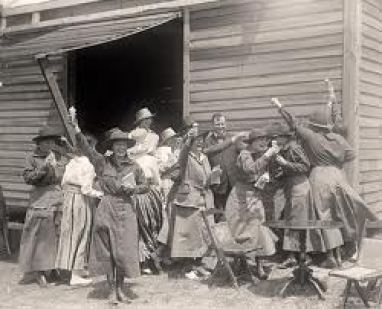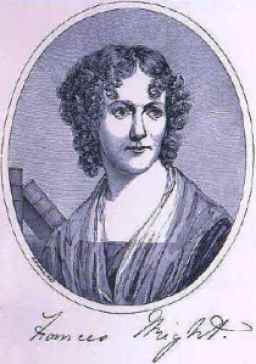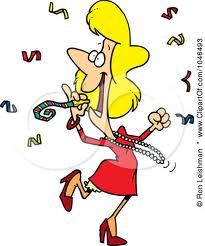Often when we think about the temperance movement it’s limited to Prohibition, mobsters, and the roaring twenties. Temperance was an idea that was tried and failed in the sense that it didn’t work well for the country resulting in the repeal of the Eighteenth Amendment via the Twenty-first Amendment. Because it is an idea that came and went, it is easy to forget the individuals who made their mark in history through the temperance movement. One of these individuals is Frances Willard.
But Frances Willard was much more than a temperance worker. She was a feminist and an advocate for women’s rights in the broadest sense. Her motto: ‘Everything is not in the Temperance Movement, but the Temperance Movement should be in everything‘ was her way of rallying a large number of women all across the country to work for reform in many different areas, but always with temperance at the core.
The Temperance movement was born out of the Second Great Awakening of religious fervor in America in the early nineteenth century. One of the people who found a renewed spirituality and a call to serve was Josiah Willard. In 1841, in order to study for the ministry under Charles Finney, Josiah and his wife Mary took their two children, Oliver and two year old Frances, and moved to Oberlin Ohio. He and Mary both studied at Oberlin College for the next four years until Josiah’s health required a move to the country.
 In 1846, the family moved to a farm outside Janesville, Wisconsin, where Oliver, Frances, and younger sister Mary, born in Oberlin, spent 13 happy years. Frances’s talents began to emerge during this time. Mary was more artistic; Oliver played “fort” and wanted to explore; but Frances wanted to play “city” and organize. Their mother taught them at home until public schools were available in the area and was aware of and promoted each of her children’s strengths. When Frances was 17 she went to the Milwaukee Seminary where her aunt taught. In 1858, the family moved to Evanston Illinois where Frances attended the Evanston College for Ladies and graduated valedictorian in 1859.
In 1846, the family moved to a farm outside Janesville, Wisconsin, where Oliver, Frances, and younger sister Mary, born in Oberlin, spent 13 happy years. Frances’s talents began to emerge during this time. Mary was more artistic; Oliver played “fort” and wanted to explore; but Frances wanted to play “city” and organize. Their mother taught them at home until public schools were available in the area and was aware of and promoted each of her children’s strengths. When Frances was 17 she went to the Milwaukee Seminary where her aunt taught. In 1858, the family moved to Evanston Illinois where Frances attended the Evanston College for Ladies and graduated valedictorian in 1859.
Between 1859 and 1868, Frances taught school at various places before returning to the Evanston College for Ladies as the President, making her the first woman college president in the United States. When the college merged with Northwestern University in 1871, she became the Dean of Women. This was an ideal position for Frances to use her considerable organizational skills, but it was short lived. She resigned in 1874 after having her influence and responsibilities greatly reduced by the President of Northwestern, Charles Fowler. These may have been typical university political struggles, but they were complicated by the fact that Frances had previously been engaged to Fowler and broken the engagement. This experience left Frances distraught and at a loss as to how to proceed in her life. She had no desire to go back to one small schoolhouse after the other teaching. She also believed that God would use her.

These years had been difficult for Frances in other ways as well. Both her father and her younger sister Mary died of tuberculosis and her brother Oliver began to drink heavily and gamble. She found herself without work and her mother’s sole source of support, so after leaving the University, she decided to go on the lecture tour for the cause of temperance. Frances was tireless, over the next ten years she averaged 30,000 miles and 400 lectures a year. Never domestically inclined, this suited the independent non-conformist side of Frances, but she was also ambitious.
In 1874, Frances became the corresponding secretary of the newly formed Women’s Christian Temperance Union, the President of the Chicago chapter, and head of the WCTU publications committee. During her lectures, Frances also began to speak in favor of women’s suffrage. Just as Lucy Stone and Susan B. Anthony found in the abolition society, this created a conflict with the leadership, in Frances’s case Annie Wittenmyer, the first WCTU president.
This is where Frances’s brilliance as a strategist began to show. As corresponding secretary, no problem or concern was too small to receive a letter from her. Through her travels and letter writing, with the help of long-time companion Anna Gordon, she made personal contacts all over the country. When the time was right, in 1879, Frances ran for president of the national WCTU, and won. She held this position until her death in 1898.
Many women in the WCTU were conservative and involved in the fight against alcohol because they believed that indulgence was sinful and because of the impact it had on the family. The fight for temperance was seen as fighting for the home, family, and motherhood thus an acceptable cause for women to work outside their homes, but many saw suffrage as too radical. Frances had the same values with regard to alcohol; she had seen its devastating effects in her brother’s life, but she also believed that the way for women to affect change in their domestic lives was to have the vote. She insisted that women not view themselves as the “weaker sex” and that they had a place in politics.
Wittenmyer had insisted on uniformity among the chapters of the WCTU. Frances preferred a more liberal approach. As long as the chapters took the temperance pledge and paid their dues they had the flexibility to work for the causes appropriate to their location. “Do everything,” was her motto. This led to work in many different areas, such as free school lunches, 8 hour work days, anti-rape laws, protection for children against abuse, and work relief for the poor. Although some thought that too broad a focus would fracture the organization, Frances’s organizational skills, her intense travel schedule, and prolific correspondence prevented this from happening.

Frances Willard’s profound belief that she was called by God for this task, her excellent speaking skills, and even her feminine demeanor made her and her message acceptable to some who rejected the message of other suffragists of the time. At the time of her death in 1898, the WCTU had grown to approximately 150,000 women, making it the largest women’s organization in the world at the time, and making Frances one of the most famous women in the nation. She truly had an impact on the fight for women’s rights and should be remembered for her considerable contribution.
Frances was also a prolific writer. Some of her works were
• Woman and temperance, or the work and workers of the Women’s Christian Temperance Union, 1883
• Glimpses of fifty years: the Autobiography of an American Woman, 1889
• How to Win: A Book for Girls, 1886
• Woman in the Pulpit, 1888
• Do everything: a Handbook for the World’s White Ribboners, 1895
• A Wheel within a Wheel: How I Learned to Ride the Bicycle, 1895
Resources
Sisters: The Lives of America’s Suffragists by Jean H. Baker
Glimpses of fifty years: the Autobiography of an American Woman, 1889
The Beautiful Life of Frances E. Willard by Anna Adams Gordon





















